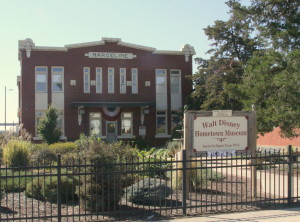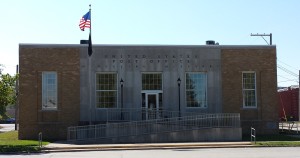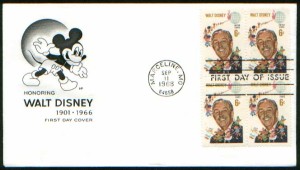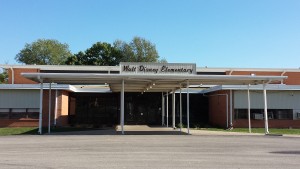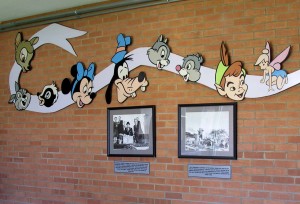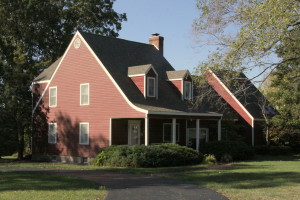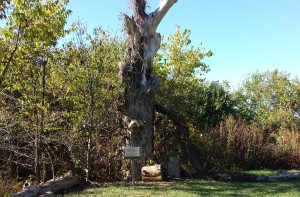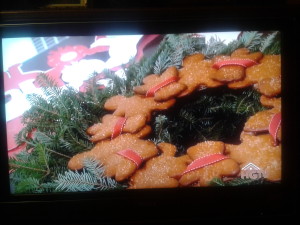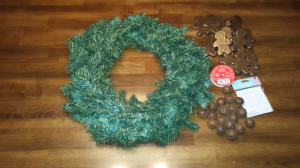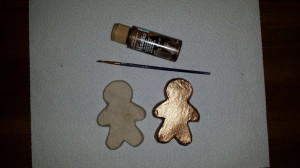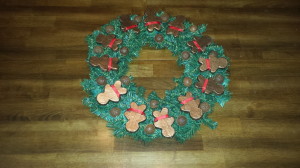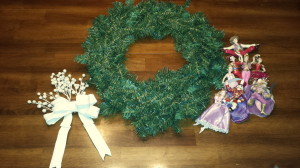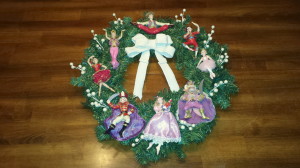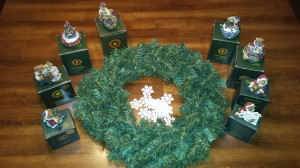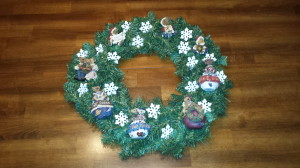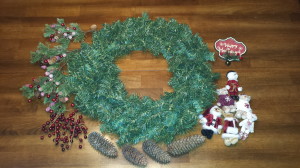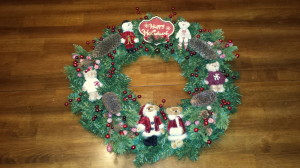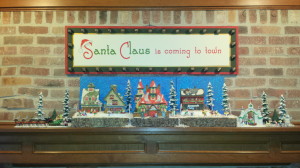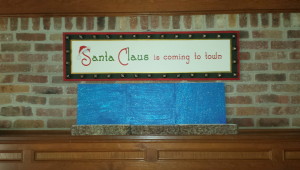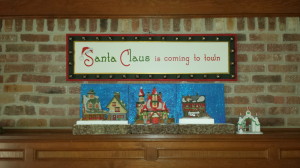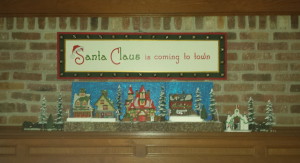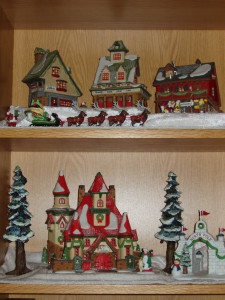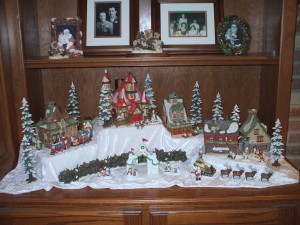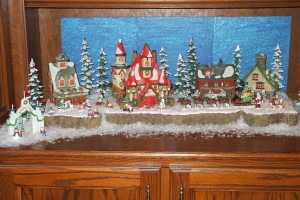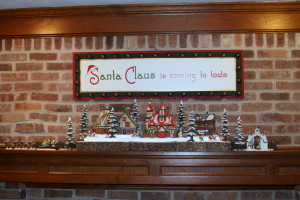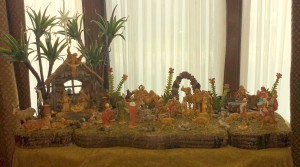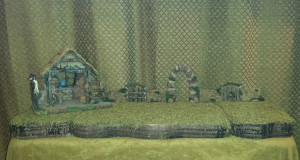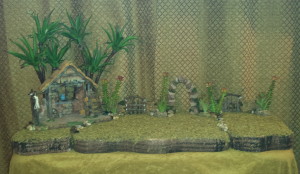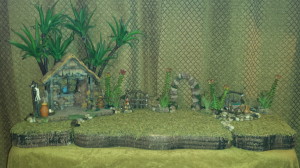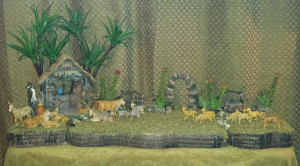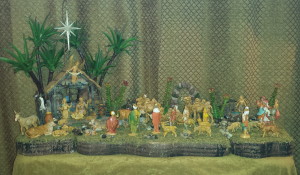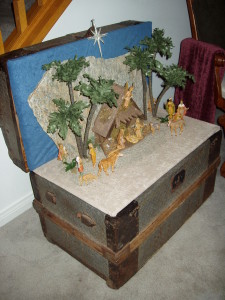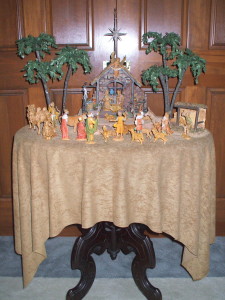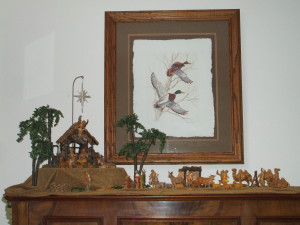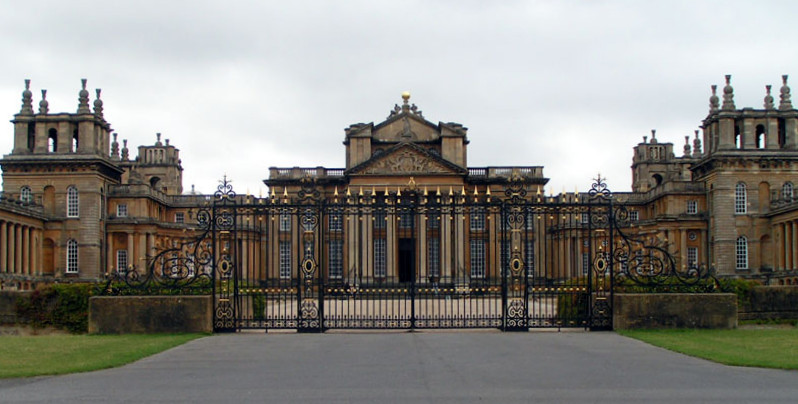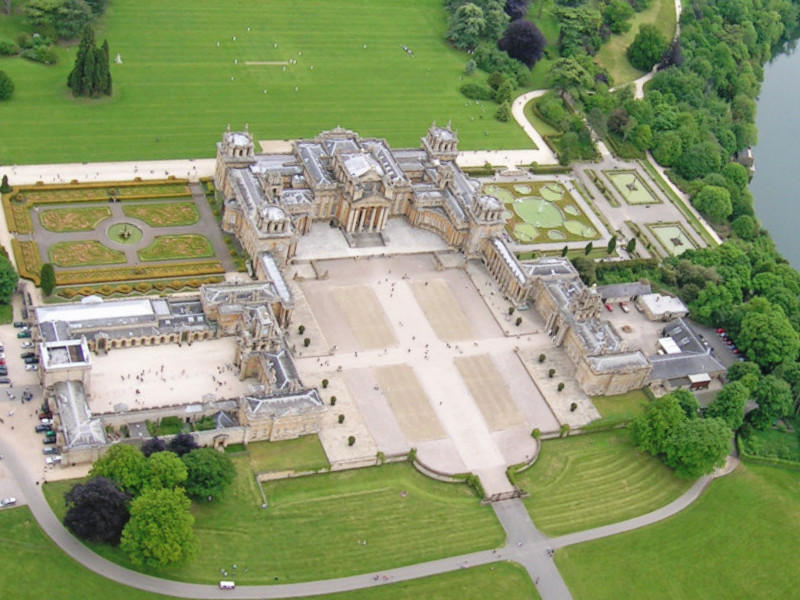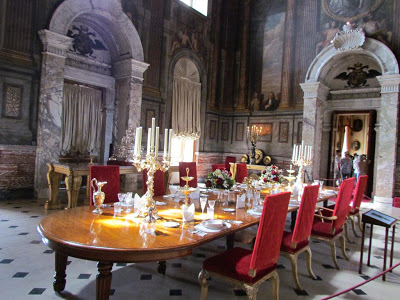I grew up as a Disney child, our family has been going to Disneyland since it opened in 1955, but of course that was a few years before I was born! Over the years I have become fascinated by the man that made such wonderful animated films and television programs, I have read many books about both Walt Disney’s personal and professional life. The first book I read was the Bob Thomas book, “Walt Disney: An American Original”. The book covers the life of Walt from his birth in Chicago, IL to his early childhood in Marceline, MO and then follows him to Kansas City as he starts the Laugh-O-Gram Company and then California as he created the Walt Disney Company and later built Disneyland. (I highly recommend the book!) Little did I know that many years later I would move to the Midwest and be able to visit the small town of Marceline and some say his inspiration for Disneyland’s Main Street. So, in honor of Walt’s birthday (Born: December 5, 1901 Died: December 15, 1966) I would like to share our October 2012 visit to Marceline, MO.
Marceline is a small town located halfway between St. Joseph and Hannibal, Missouri. In 1887 the Atchison, Topeka and Santa Fe Railway began construction on a railroad station and main terminal because of the town’s excellent location between Kansas City and Chicago. The town quickly grew and by 1906 when the Disney family moved from Chicago, IL to Marceline the population was 2500.
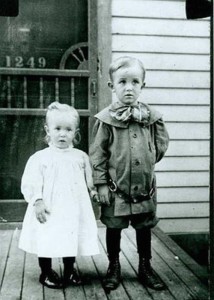 Elias and Flora Disney along with their five children (Herbert age 17, Raymond age 15, Roy age 12, Walt age 4 and Ruth age 2) moved into a farm just outside of town. Elias purchased the small one-story house and 45 acres of land. The farm had 5 acres of apple, plum and peach orchards and they grew corn, sorghum and wheat. They also raised hogs, chickens, dairy cows and horses. While Elias and the older boys would work on the farm and in the fields and Flora did household chores. Walt and Ruth would sell apples or Flora’s homemade butter in town and during the spring or summer they would swim or fish in the Yellow Creek located nearby.
Elias and Flora Disney along with their five children (Herbert age 17, Raymond age 15, Roy age 12, Walt age 4 and Ruth age 2) moved into a farm just outside of town. Elias purchased the small one-story house and 45 acres of land. The farm had 5 acres of apple, plum and peach orchards and they grew corn, sorghum and wheat. They also raised hogs, chickens, dairy cows and horses. While Elias and the older boys would work on the farm and in the fields and Flora did household chores. Walt and Ruth would sell apples or Flora’s homemade butter in town and during the spring or summer they would swim or fish in the Yellow Creek located nearby.
Even though the Disney family only lived there four years, Marceline left a lasting impression on Walt and he had wonderful memories of his early childhood years. Walt and his sister Ruth spent many happy hours playing around the farm and Walt would sit under a tree making up stories and dreaming of his future. Sometimes Walt would walk into town and visit the railroad station; he was fascinated by the trains that came through Marceline on a regular schedule. Eventually, Walt’s father sold the farm and the family moved to Kansas City, Missouri in 1910. It is said that Marceline is “where Walt Found the Magic”.
Many years later after Walt and his brother Roy built the successful Walt Disney Company and Walt never forgot his beloved Marceline … and it appears Marceline never forgot Walt. In 1956, Walt received an invitation from the city stating that they were naming the recreation center and new swimming pool after him. Walt accepted the invitation and he, Roy and their wives traveled to Missouri for the dedication ceremony. During their time in Marceline, Walt and Roy visited the old family farm, they also visited Main Street and went to the old Santa Fe train depot and the nearby E.P. Ripley Park. They also went to Walt’s old school, Park School, and Walt sat at his old desk and found the W.D. that he had carved into the top. Of course there were many photo opportunities during the visit but the best part was the time Walt and Roy had to reminisce about all their childhood memories. Walt later returned to Marceline in 1960 when the old school was rebuilt and renamed the Walt Disney Elementary School.
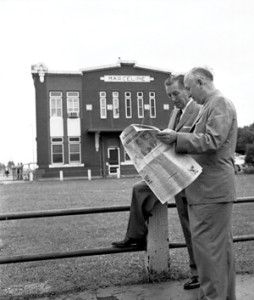
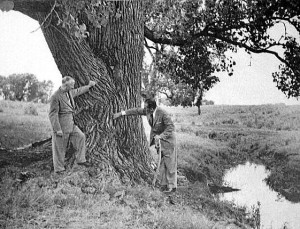
Today, Marceline continues as an agricultural center, industrial community and also has one of the largest publishing companies in the Midwest. The railroad trains no longer stops in Marceline, although the trains still travel through the town quite frequently.
Listed below are some of the current Disney sites to see in Marceline:
Walt Disney Hometown Museum
An excellent place to start a visit to Marceline is the Walt Disney Hometown Museum located in the old Santa Fe train depot, which is fittingly the place where Walt and his family first arrived in Marceline back in 1906. The Museum has a wonderful and unique collection of Disney family memorabilia which were donated by Ruth Disney Beecher, Walt’s sister. Some interesting items in the museum collection include the following: Walt’s old school desk which visitors can see his carved initials, personal Disney family letters, a phonographic recording from Walt’s parent’s 50th wedding anniversary, family photographs including many from Walt and Roy’s visit in 1956, a framed piece of Walt’s Carolwood Pacific Railroad track from his Holmby Hills estate and an actual Midget Autopia car from the Disneyland ride that was donated in 1966 by Walt and Roy for Walt Disney Park in Marceline.
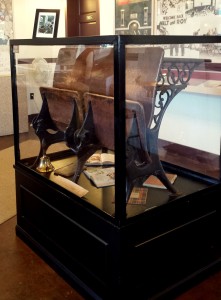
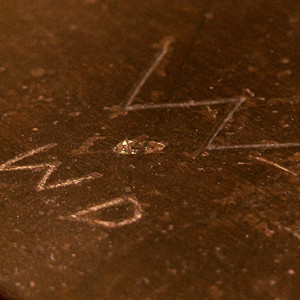
Travel Note: Take the time to walk through the museum and look at the displays and read the Disney family letters which are displayed in chronological order. Sadly one of the letters written by Walt’s mother, Flora, to Ruth on November 7, 1938 references the new house in California that Walt and Roy bought for their parents. In the letter she complains about the fumes coming from the furnace, sadly a few days after writing the letter Flora was overcome by the fumes and died.
We enjoyed the museum but what made our visit so special was the volunteer that was our tour guide, Inez. When Walt and Roy visited Marceline in 1956 they stayed at the home of Rush and Inez Johnson instead of the local hotel because it was the only home in town with air conditioning for the comfort of the Disney family. Walt and his wife, Lillian, stayed in the room of the Johnson’s 7 year old daughter Kaye. Kaye and her husband now own the old Disney home in Marceline and Kaye also runs the museum. Inez had so many wonderful stories to tell about Walt during his visit back to Marceline!
For more information, prices and hours of operation, please check the Museum’s website at www.waltdisneymuseum.org
Main Street USA
The town center of Marceline looks like every other small town in the Midwest but what makes it special is that it has been said that this main street in Walt’s boyhood hometown was the inspiration for Disneyland’s Main Street USA. Take a look and you will notice the Zurcher building at the corner looks a lot like the Emporium Store in Disneyland … is it a coincidence, I don’t think so!
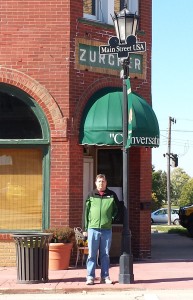
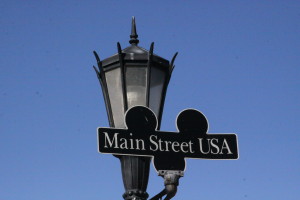
Travel Note: From the museum we would suggest taking a short walk over to the center of Marceline, that way you will see the other Disney sites located a short distance away and you don’t have to move your car.
Uptown Theater
Located in downtown Marceline on Main Street USA is the Uptown Theater which had been in operation from 1930 to 2010. It was the location for two Disney film premiers, “The Great Locomotive Chase” in 1956 which was held during Walt and Roy’s visit back to Marceline and the other was “The Spirit of Mickey” in 1998. The Theater is now a Bed & Breakfast which has five themed room, the Walt Disney Suite, the Americana Mickey Room, the Santa Fe Room, the Winnie the Pooh Room and the Toonfest Room. (Toontest is an annual celebration held in Marceline during the third weekend in September that focuses on the art of animation or “cartooning”. For more information, please see www.toonfest.net)
Walt Disney Post Office
Located just off Main Street USA, near the center of Marceline is the Walt Disney Post Office. In 1968, the US Postal Department issued a Walt Disney commemorative stamp and it was officially released from this location with the entire Disney family in attendance along with thousands of Disney fans. In August 2004, the US Post Office was officially renamed the Walt Disney Post Office in honor of Marceline most famous person.
E.P. Ripley Park
Located across the street from the Walt Disney Post Office is the E.P. Ripley Park which is named in honor of the Santa Fe Railroad’s first president. In 1898, the railroad donated the land to the city of Marceline. When Walt was building Disneyland he knew he wanted to incorporate steam trains and named one of them the E.P. Ripley. Two trains are located at the park, an original Santa Fe 2546 steam locomotive and a red caboose. (Both of these make a great photo opportunity!)

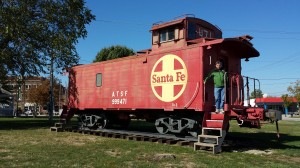
Also located in the park is a Gazebo which was built in 1898 and it is where band concerts took place every Sunday. The Disney family attended many of those concerts during their stay in Marceline. It has been said that the gazebo was the inspiration in the 1935 Disney cartoon, “The Band Concert” which featured Mickey Mouse and Donald Duck. (Listen carefully and you can almost hear Mickey leading the band in a rendition of the William Tell Overture just like in the movie!)
Walt Disney Park and Pool
Just south of the center of Marceline is the Walt Disney Park and Pool which was officially dedicated in July 1956 with Walt, Roy and their wives in attendance. The swimming pool is still in use seasonally by the city of Marceline. The park was also the site of the Midget Autopia ride from Disneyland was donated by Walt and Roy in 1966. It is the first attraction that has ever left Disneyland and been operated outside of a Disney-owned themed park. The track was reconstruction on site and was used by the children of Marceline for many years, parts of the track still remain and a restored Midget Autopia vehicle can be seen at the Walt Disney Hometown Museum.
Walt Disney Elementary School
Travel Note: When the school is in session please respect it as an educational institution and ask permission before entering the building or taking pictures.
Located a short drive from the center of Marceline is the Walt Disney Elementary School. There are several Walt Disney Elementary Schools across the country such as the Anaheim and Burbank, CA, Chicago IL locations and the first one to receive the honor was in Tullytown, PA. The Marceline location was very special to Walt because he attended the school with his sister Ruth. The original school, known as Park Elementary, was a 2-story brick building and when it fell into disrepair it was replace by the current one-story modern building in 1960. When Walt received a letter from the school officials in Marceline requesting that the new school be renamed in his honor Walt graciously granted permission and he even bought the school new playground equipment.
In addition, he installed a special 55 foot flag pole that was originally used in the 1960 Winter Olympics held in Squaw Valley, CA of which Walt was the Chairman of Pageantry. During the games there were 30 flagpoles which flew the 30 flag of the participating nations and all the flagpoles had special plaques signed by Disney; visitors can see this plaque on the flagpole in front of the school. Walt also gave the school an official Disneyland flag and it is the only place outside of Disneyland to fly this special flag.
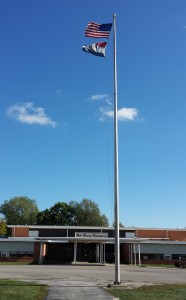
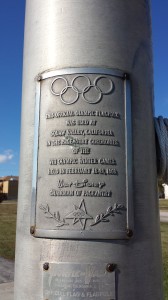
Located in the lobby of the school, when it is not on display at the Walt Disney Hometown Museum, is the school desk of Walt from the old Park School with the initials WD carved into the wooden top. At the time of the school’s dedication, Walt commission one of the Walt Disney Company artists, Bob Moore, to create artwork for the school’s entrance, hallway and gymnasium. The artwork is still in use and features many of the Disney characters and can be seen throughout the building. (Take a peak inside from the window’s of the school and you can see some of the murals)
The Old Disney Home, Walt’s Barn and the Dreaming Tree
Travel Note: The old Disney home is currently a private residence so please be respectful during your visit.
Located north of town is the old Disney Home and we highly recommend a stop there before ending a visit to Marceline. Traveling north from the museum, turn left at Broadway. The house is on the northwest corner and be sure to look carefully for a very small parking area just past the house on the right side of the street. Hopefully, you will find the path over the foot bridge and through the bushes because at the end are two very special hidden Disney sites. As you walk along the path there are signs that explain the time period that Walt lived in Marceline.
The first site is the Dreaming Tree which got the name from the time Walt and Ruth spent during the afternoon sitting under the large cottonwood tree daydreaming. Unfortunately, the tree has not survived over the years in very good condition. Walt called his time sitting under the tree and observing the nature surrounding him as “belly bounty” and it was to influence him many years later and served as his inspiration for some of the films and television programs that he made. As you visit the spot, pause and take the time to reflect and imagine Walt all those many years ago. (Earlier in this post, there is a photo of Walt and Roy at the Dreaming Tree during their visit to Marceline in 1956)
Continue to follow the path past the Dreaming Tree and you will see several more signs that lead toward the second site, Walt’s Barn. The barn located on the Disney farm was another place where Walt and his sister Ruth would spend their days playing together. This replica was built in 2001 and features a distinct pitched roof similar in style to the original barn that stood at this location. As visitors enter the barn, they will be amazed to see thousands of signatures and messages left by devoted Disney fans. We added our signatures and also took the time to write a message with our heartfelt thanks to Walt! (Look for our message under the windowsill overlooking the Marceline water tower)
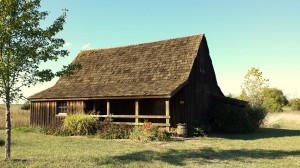
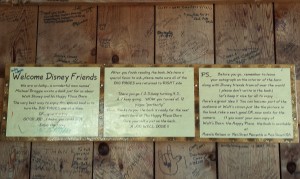
That concludes our family visit to Marceline and it was a wonderful and very memorable trip for this Disney fan!

